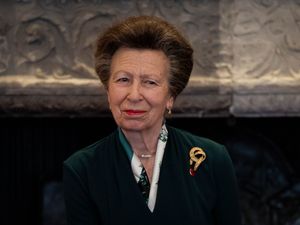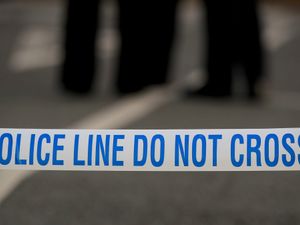Honeymoon suite and Carry On: The tangled history of Henry VII’s bed
The 15th century four poster was found dumped in a Chester hotel car park in 2010.
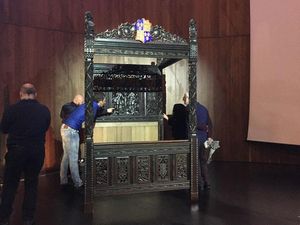
The honeymoon suite of a hotel, an antique dealers in Edinburgh, and the set of Poirot all played a part in the mysterious history of Henry VII’s bed, experts have said.
The 15th century four poster was found dumped in the car park of the Redland Hotel in Chester in 2010, after standing in the hotel’s wood-panelled honeymoon suite for around 15 years.
Guests have unknowingly slept on the royal bed for the bargain price of £95 per night and its history has been investigated for the last eight years by its owner, antique bed specialist Ian Coulson, with the help of TV historian Jonathan Foyle and a team of experts.
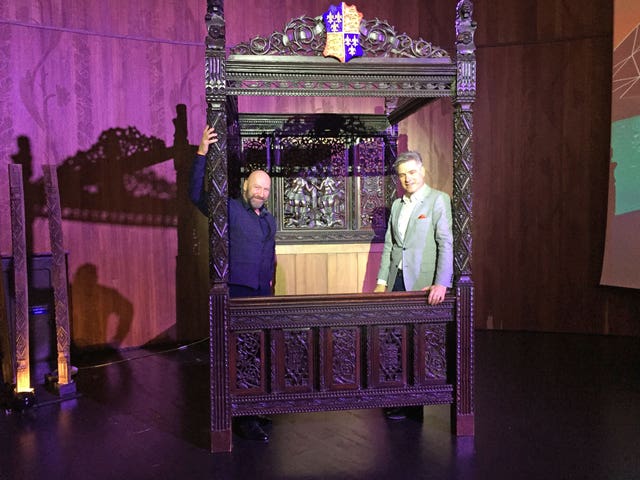
“It’s been lost in plain sight, really,” Mr Foyle said. “Its survival is so improbable that I don’t blame people for being sceptical.”
Mr Coulson and Mr Foyle believe it is the marital bed belonging to Henry VII, head of the house of Lancaster, and Elizabeth of York. The couple married in 1486 following Henry’s victory at the Battle of Bosworth, which signalled the end of the War of the Roses.
In 2010 the bed was collected by Byrnes Auctioneers who listed it for sale as a “Victorian bed”. Mr Coulson spotted the unusual piece of furniture online and said: “I could see it was a spectacular bed, even from the one image.” He purchased it for £2,200.
When he collected it a few weeks later he said he “had an inkling it was a lot older than they thought”.
Mr Coulson and Mr Foyle came together to discuss their findings at a one-day symposium at the V&A museum, London, on Monday.
By looking at the “deep” oxidisation of the wood, which “takes centuries to produce”, and the “ancient tool marks” on the timber, Mr Coulson realised it was an ancient relic.
“Voicing this opinion that you’ve possibly got a bed here that is a Tudor relic and it has royal arms on… was met with quite a lot of scepticism, which I completely understand,” he said.
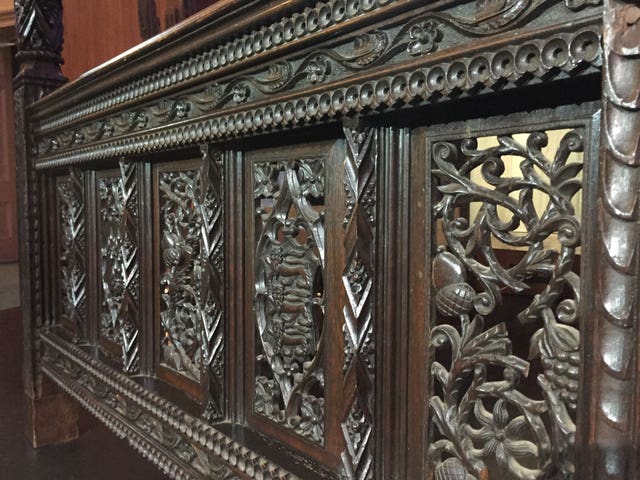
He enlisted the help of Mr Foyle who immediately thought “it must be fake” because it had royal arms, but when he saw it he began to change his mind.
“‘What’s Adam and Eve doing there? Why’s it got an English script?’ I was intrigued, the material looked much older than I took it to be,” he said.
Mr Coulson introduced him to the work of George Shaw, an architect from the 19th century who specialised in Gothic revival. He believed Mr Shaw had copied the bed in the 1840s and sold replicas to English gentry under the guise of being true antiquities.
“I could see that the copy was much cruder,” Mr Foyle said. “I could see that the copy was inferior in many ways, and much fresher looking and typically Victorian looking.”
When he visited Mr Shaw’s house, St Chads, in Uppermill, Saddleworth, a missing piece of the bed – a panel containing the royal crest – was found hanging above a doorway. In 2015, Uppermill Parish councillors voted to keep the panel at St Chad’s rather than reuniting it with the bed.
Mr Coulson and Mr Foyle have traced the Tudor relic’s history, starting from the 15 years it spent at the Redlands Hotel. It was brought there by the owner’s daughter, a curator from Holyrood, who bought it from an antique dealer in Edinburgh.
The dealer, Eric Davidson, was “doing antiques on an industrial scale, he had two or three warehouses”, Mr Coulson said after he tracked down Mr Davidson, who is now dead, three years ago.
“He can recall the bed, but he couldn’t recall where he got it from,” Mr Coulson said. Mr Davidson did not mention the bed’s on-screen history which the duo believe took place during the 1960s and 1990s.
Tim Garland, an antique restorer and historian, spotted it being used as a prop in a Carry On film.
“There was Sid James, lying in a bed very much like this one in Carry On Dick – 1974,” Mr Foyle said.
“Having looked at a couple more period dramas, Poirot from the early 1990s had just such a bed,” he said.
“Every time the headboard was obscured, there were cloths hanging over the foot boards so we couldn’t be sure it was this one.”
Using a blown-up still image from the 1995 TV series Pride And Prejudice, Mr Foyle demonstrated that the prop on screen perfectly matched the carvings on Henry VII’s bed.
“You can see it absolutely clear, you can trace the carving round,” Mr Coulson said. “100% it is this bed.”
There has been some scientific conflict over the bed’s origins, with one report dating the wood to be post-1756 and from the US, while another determined it was European and could not be dated due to beetle damage.
“I’d love to reconcile that,” Mr Foyle said. “What you’d like to think is that people are keen to learn about conflicting results from the same discipline and identify where that came from.”
Mr Coulson said he would like the bed to end up in a national collection in the UK so the public can view it.
“What has to be done is that, frankly, we ought to take it seriously and determine the right place that it should be displayed for the nation, it’s amongst national treasures,” Mr Foyle added.


